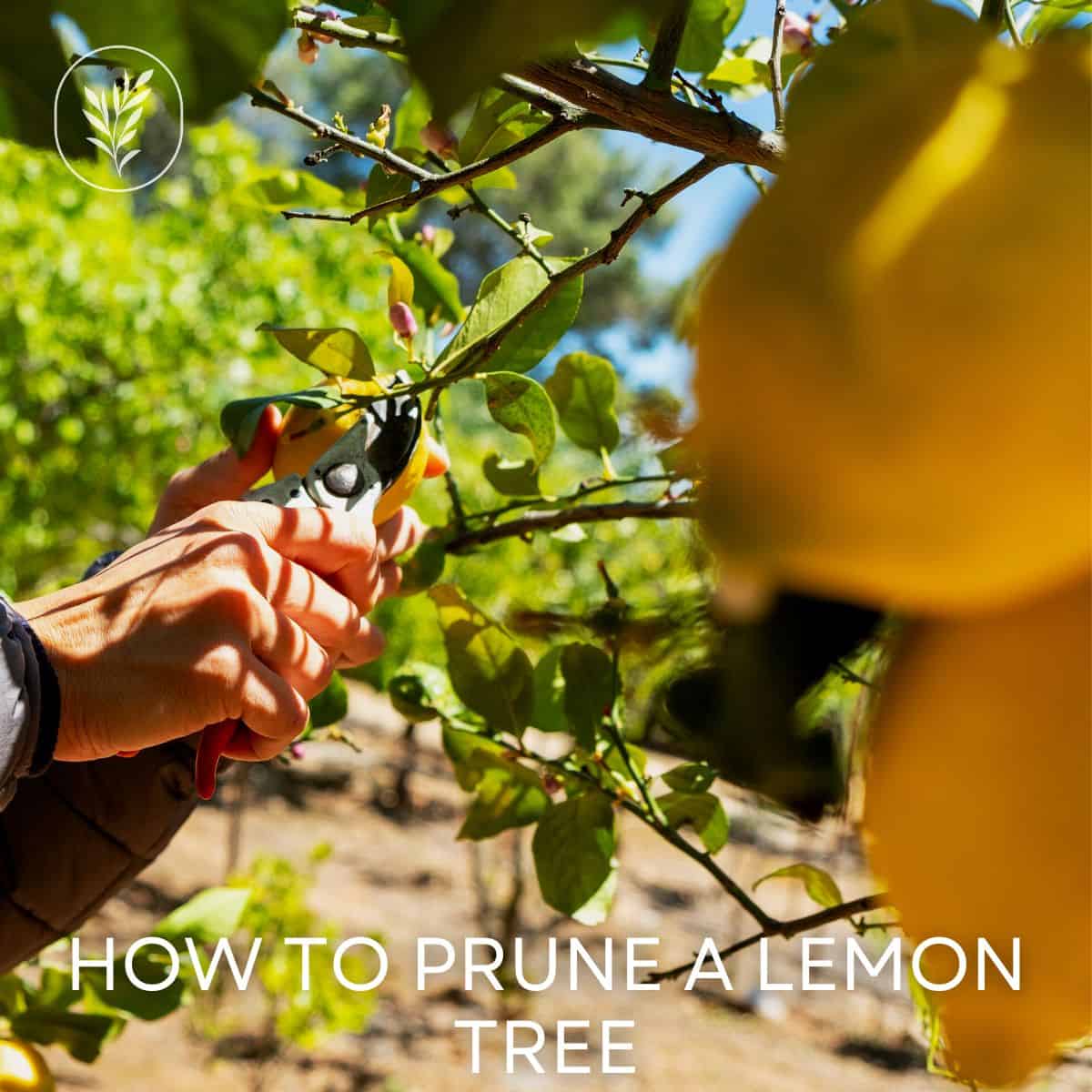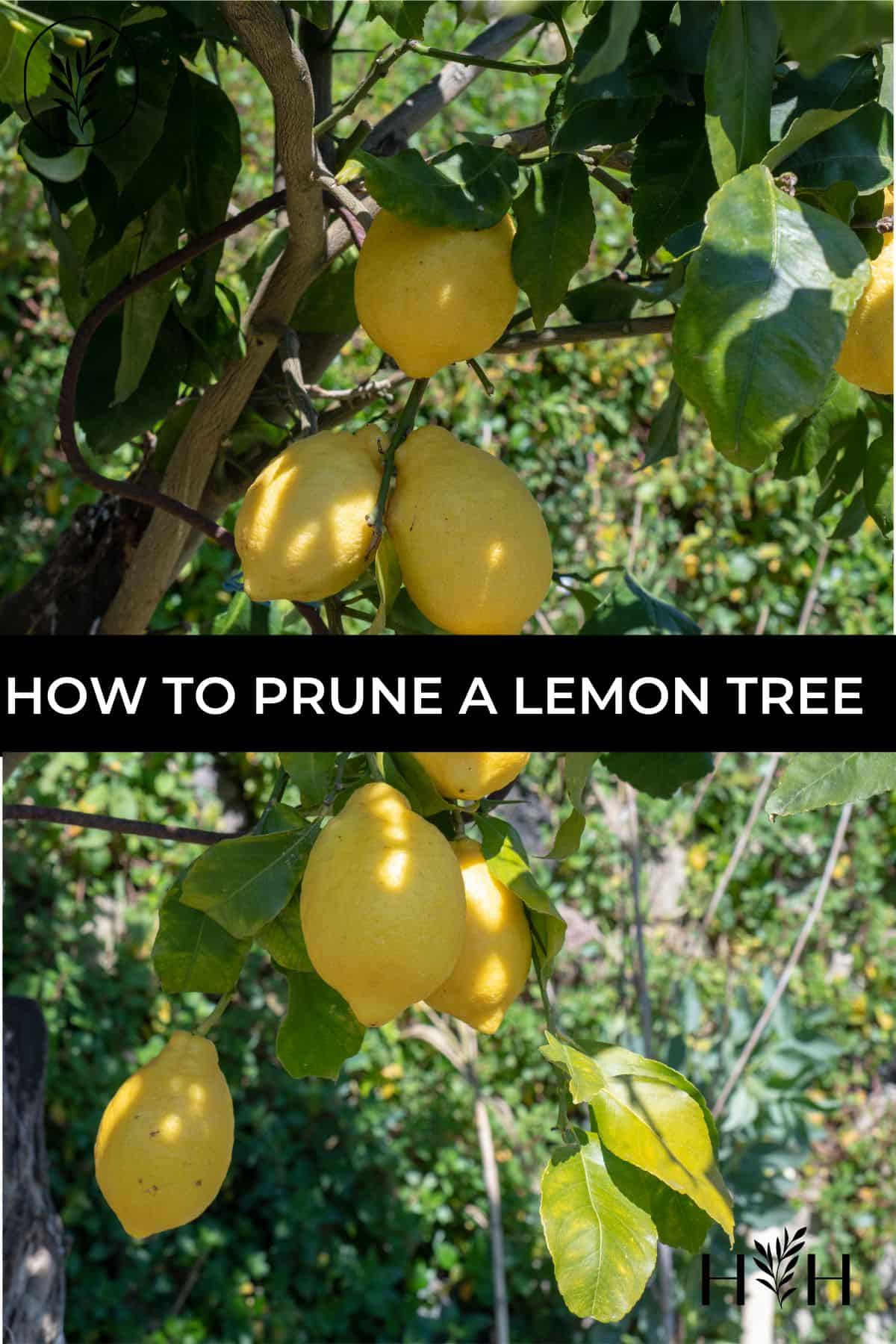Wondering how to prune a lemon tree? The best way to trim these vigorous plants depends upon the maturity of the individual plant.
To prune a lemon tree, start by removing any dead, diseased, or damaged branches. You can then begin shaping the tree by cutting back any overly long branches. Young lemon trees can be shaped into small rounded trees, bushy shrubs, or even standard topiaries. Established lemon trees can be trimmed to maintain their desired shape or size, but pruning isn’t necessary for production. Lemon trees are generally pruned in early spring.
Read on to learn all about how to trim lemon trees!

How to prune young lemon trees?
Young lemon tree pruning sets up the future structure of the mature plant. The idea is to provide enough space between the branches for some air circulation and to remove any suckers that are growing from beneath the tree’s graft.
Lemon trees are generally not trained as much as other fruit trees, like apples, because they are naturally very bushy. That said, if you have the time, it is certainly possible to espalier them along a wall or even make a little hedge out of a row of plants.
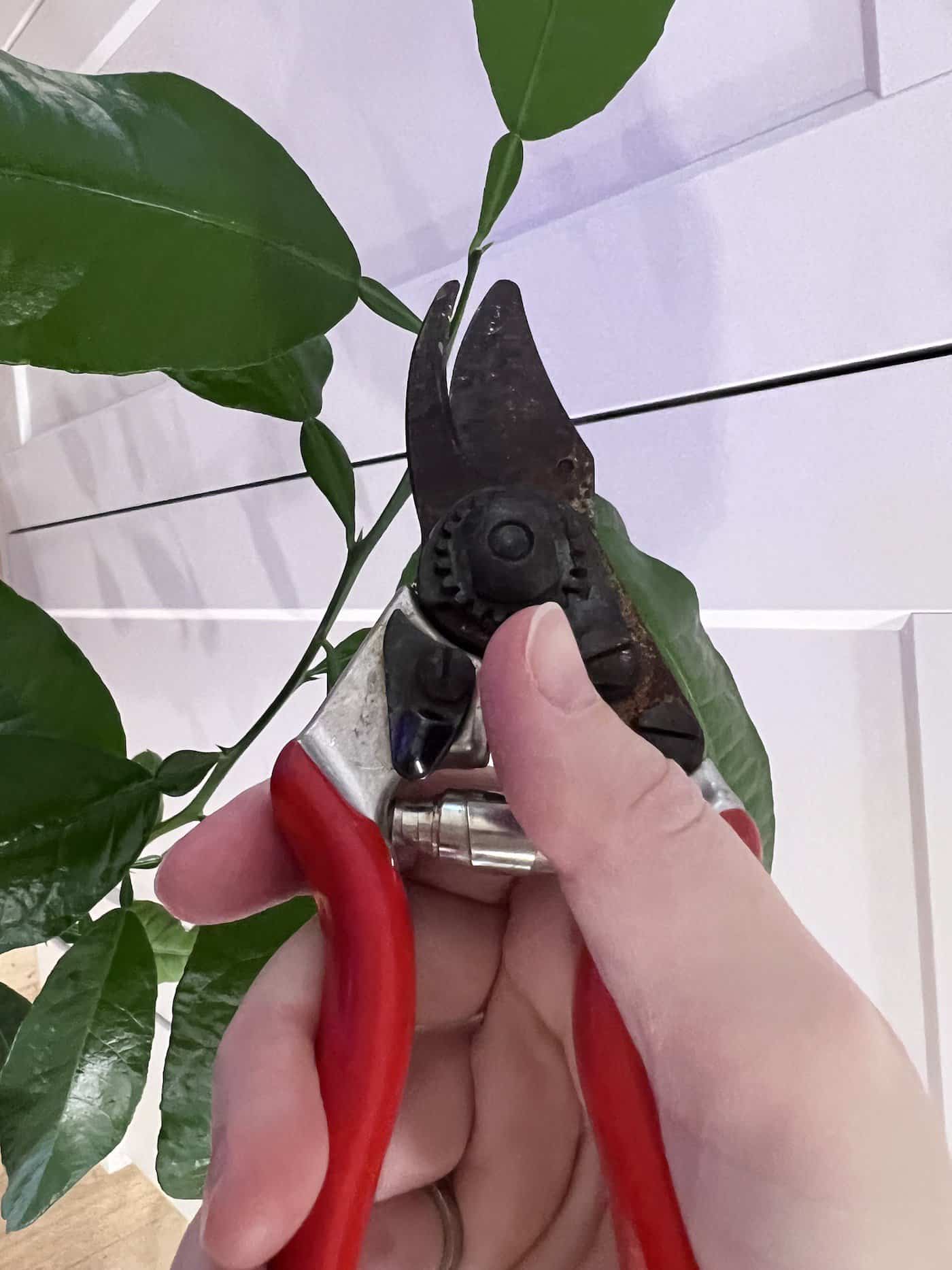
When learning how to prune a lemon tree of any age, you should start by removing any dead, diseased, or damaged branches first. You can then begin shaping the tree by cutting off any overly long ones and trimming back the side branches so that they are slightly shorter than the main stem.
As your lemon tree matures, it is important to continue regular pruning and thinning to encourage the growth of new shoots. This will help keep your lemon tree healthy and productive.
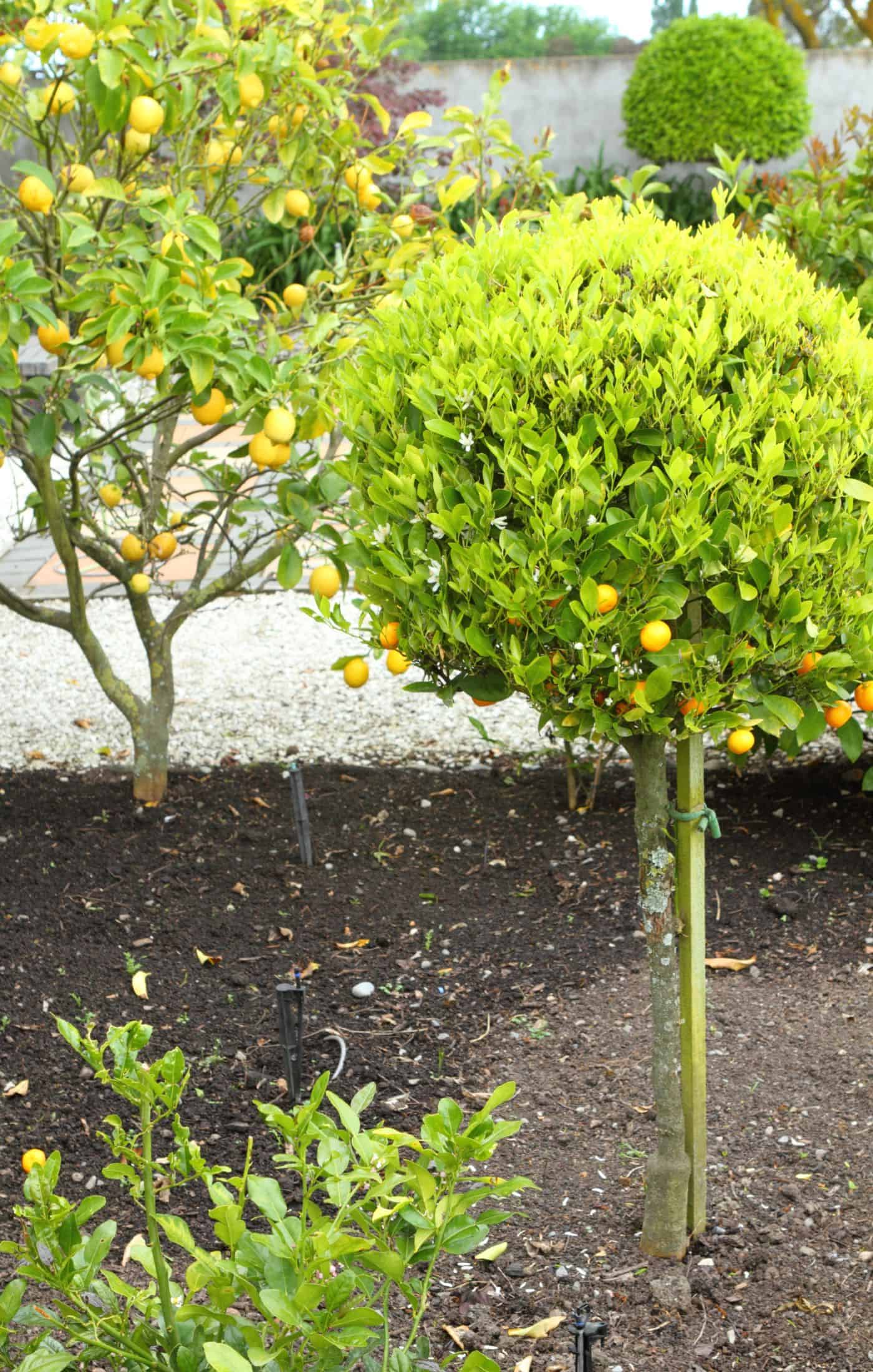
Basic lemon tree pruning steps
Here are the basic steps for pruning a lemon tree:
- Remove all branches that are dead, damaged, or diseased. Take them right back to about an inch from the base rather than leaving a half-long stub.
- Take a look at the tree and decide which main branches coming off the trunk should be the tree’s primary scaffold branches. These branches should be thick, established stems coming right off the trunk. Remove any branches that are crossing these main scaffold branches or have the potential to rub against them.
- Remove any suckers from the base of the tree. These shoots are typically not productive and should be removed as soon as they appear.
- Remove any water sprouts from the top of the tree’s canopy. These shoots are young vertical stems that grow upwards quite quickly. They are typically not productive and should be removed as they appear.
- If the lowest branches are touching the ground, or at risk of touching the ground in the near future, remove the lowest branches from the tree. Cut them back to about an inch from the main trunk.
- On established trees, examine the leaf canopy and see if dappled light can make it through the leaves. If not, remove some branches, leaving only the healthiest secondary stems coming off each main scaffold branch.
- Take a step back and examine the overall shape and form of the tree. Make any last adjustments.
“Pruning can improve fruit quality through increasing light in the canopy. In some cases, pruning out water sprouts (gourmands) may improve yields. Reducing tree height facilitates harvesting, reducing labor costs as well as risk of injury from ladders. Skirt pruning facilitates weeding, mulch laying, and other cultural practices, as well as reducing risk of soil borne pathogens affecting the fruit. Pruning may reduce insect and disease pest problems.”
Pruning Citrus, University of California Cooperative Extension
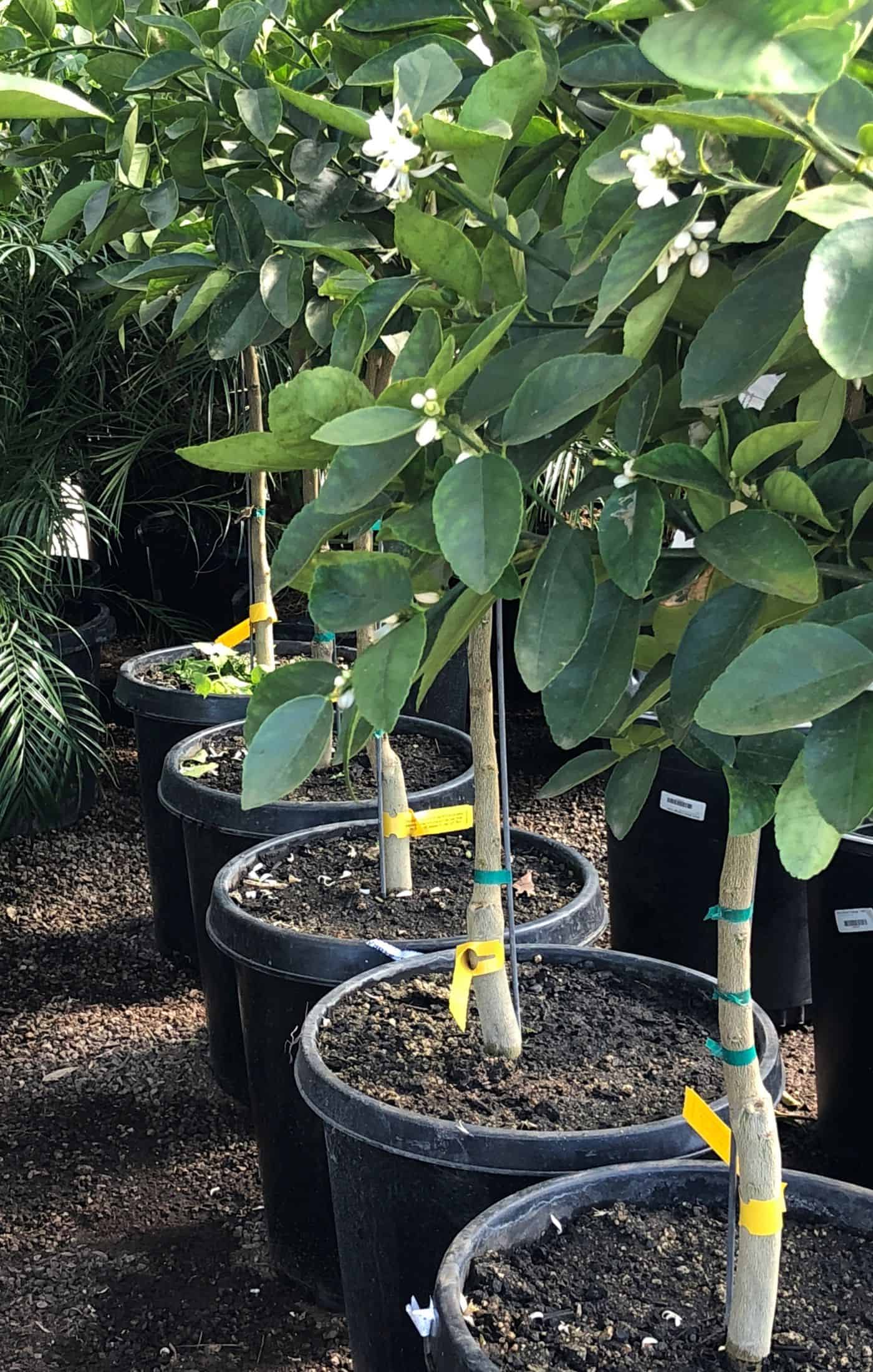
When to prune a lemon tree?
Lemon trees are most commonly pruned in late winter or early spring. The best time to prune them is the period between harvest/the coldest days of the year and the burst of fresh stems and leaves the following spring.
Young lemon trees can be pruned and shaped any time of year, especially if they are potted and not yet bearing fruit. For established trees growing indoors in artificial lighting conditions, the question of when to prune lemon trees can be a bit more tricky to decipher. In general, prune when there is the least amount of fruit on the tree.
“Citrus grow as bushy, evergreen trees that need little or no pruning – just as well, given the capricious response of citrus to pruning cuts. Do most of what little pruning is necessary just before the spring flush of growth where winters are cold, or anytime in perpetually hot climates.”
The Pruning Book, by Lee Reich
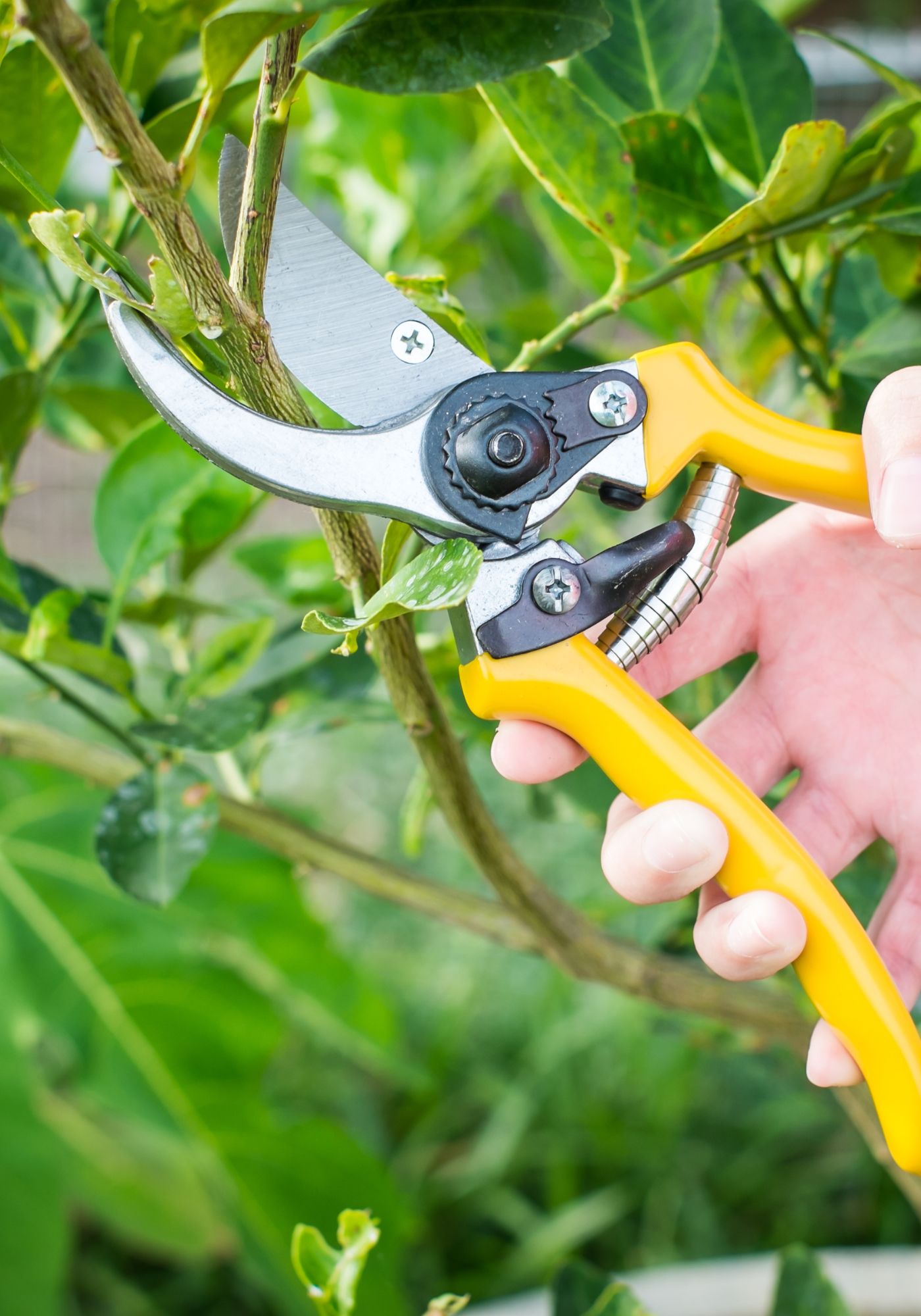
Shaping young trees
Lemon trees are usually shaped into a small tree, a bushy shrub, or a topiary (like a standard “lollipop” style topiary). Citrus trees – including most lemon trees, are shaped to have main scaffold branches and then smaller secondary branches that become the productive branches.
The main branches of lemon trees are usually shortened with pruning cuts when young so that they become thicker to support eventual fruit production and also encourage outward growth. Each pruning cut will help dormant buds on the parent branch activate and start to sprout.
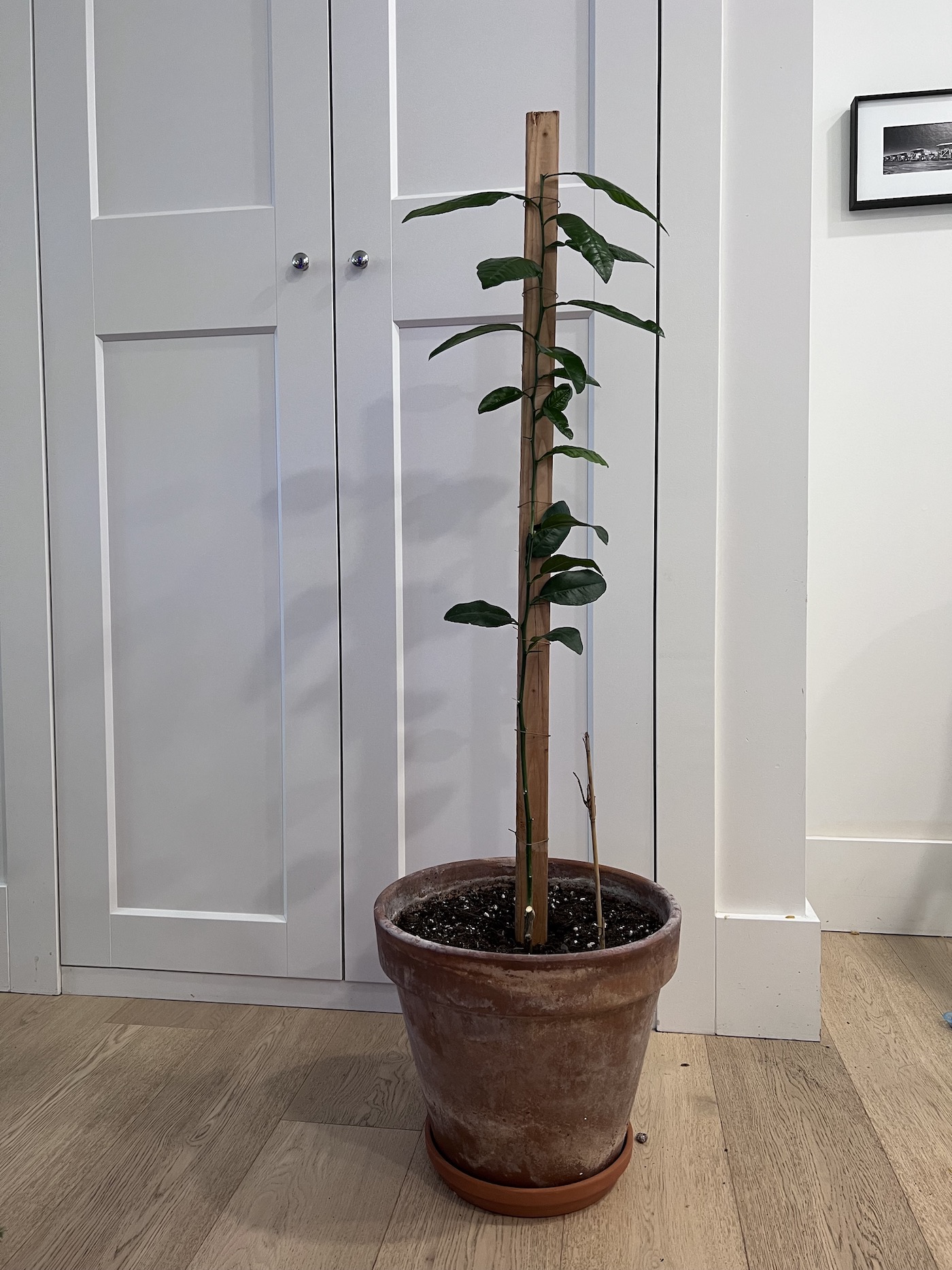
Select healthy branches to become the main lemon tree branches. Completely remove dead branches and other dead wood from the base of the plant if present so you can see what’s going on. Use your pruning shears to remove any crossing branches and any basal shoots coming up from the root ball.
“Because it is often hard to force stems into the roles you select for them, wait until a plant is a few years old, and older stems have calmed down in growth, before selecting scaffold limbs. Or just leave the plant to its own whims.”
The Pruning Book, by Lee Reich
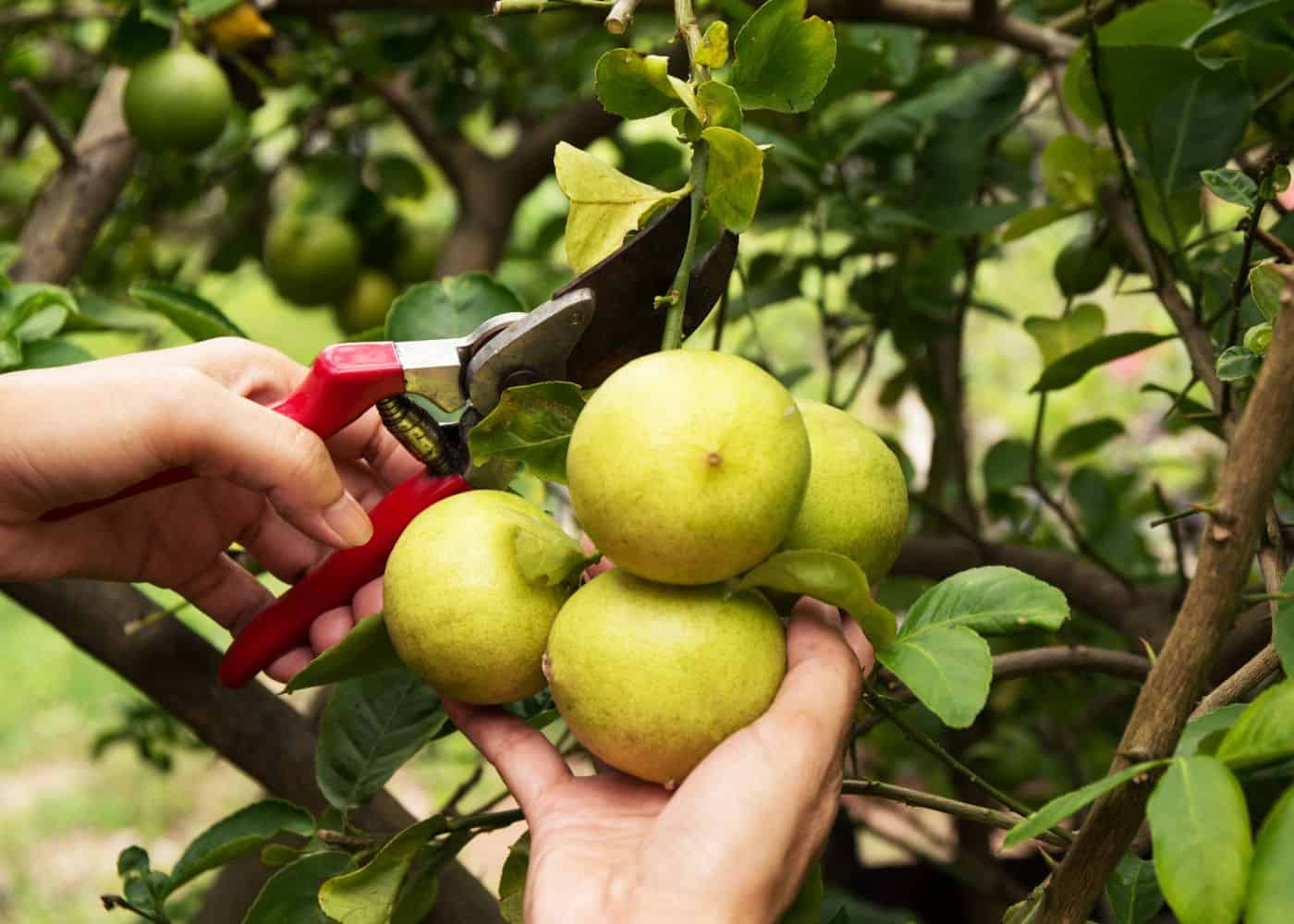
Pruning growing lemon trees
Give your lemon tree regular light pruning as it grows. They tend to grow long, lanky branches that can’t always support the weight of fruit. Thin out the tree by removing stems that are dead, damaged, or diseased. You can also remove branches that are crossing other branches and becoming tangled. The remaining stems can be shortened to encourage their naturally bushy habit.
When pruning mature lemon trees, you will want to concentrate more on thinning and shaping rather than major cutting back. Prune just after the spring flush of growth where winters are cold or anytime in perpetually hot climates.
If your lemon tree produces too much fruit, you can remove some of it to help balance the tree. This will help promote bigger, juicier lemons and prevent branch breakage.
Pruning lemon trees is an important part of their care and can help ensure a healthy and productive tree for years to come. If you follow the steps above, you’ll be well on your way to having beautiful, abundant lemons from your very own tree!
Pruning a potted lemon tree
If you’re growing a lemon tree in a pot, pruning is also important for keeping your plant healthy and attractive. Choose an appropriate pot size for how large the plant is, and check it often to ensure that it’s not becoming rootbound.
Potted lemon trees should also be pruned to encourage growth and fruiting. Trees growing indoors will generally only bear fruit if they have sufficient artificial light. They rarely grow a decent crop with light through a household window.
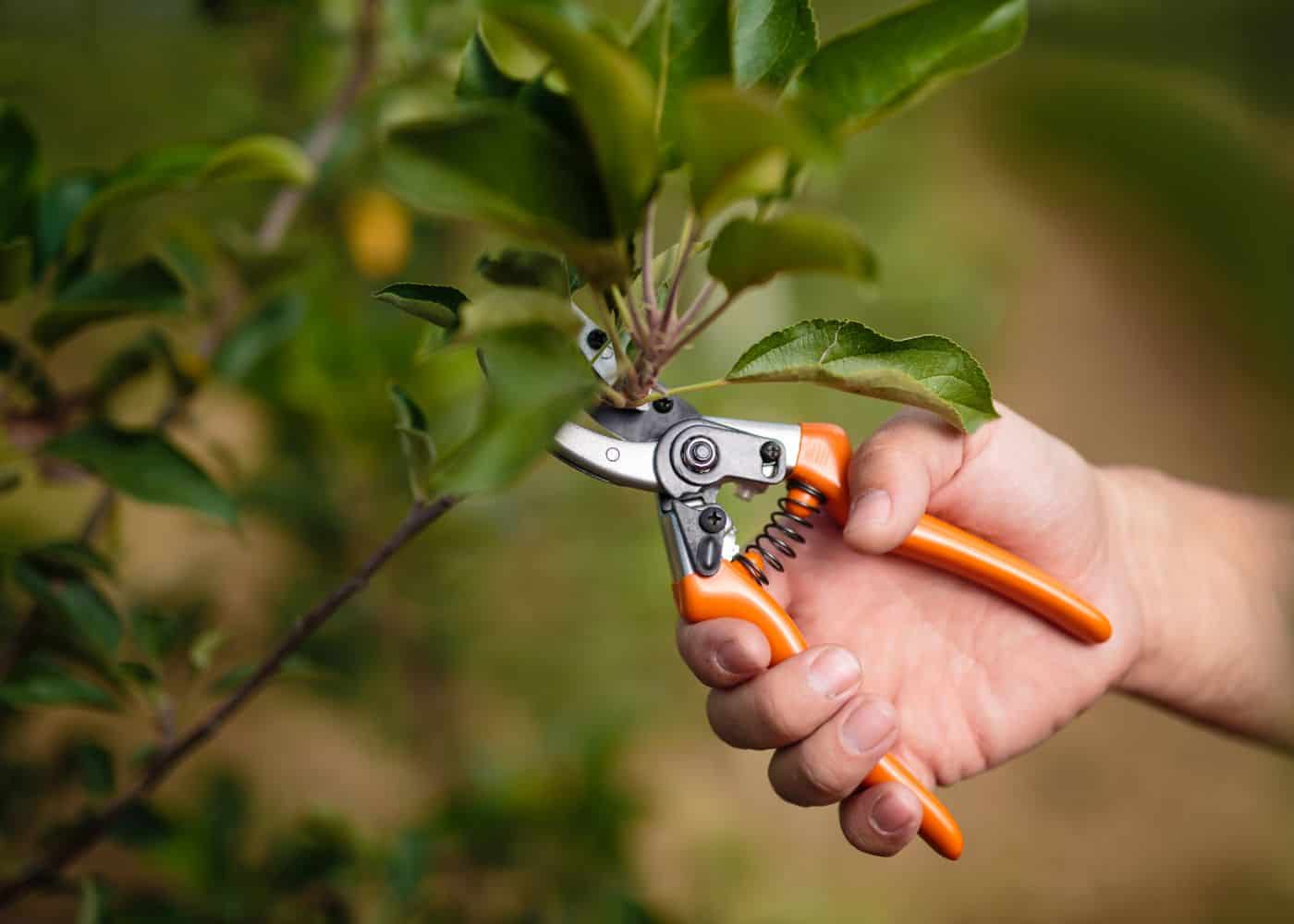
Pruning old lemon trees
Pruning old lemon trees starts like any other pruning. Start by looking at the tree’s branches and overall shape. Then remove any branches that are dead, damaged, or diseased. These should be removed immediately (no matter the time of year).
Typically you want to cut them back to about an inch from the trunk. Don’t cut into the flared “collar” at the trunk around the branch, as that is part of the trunk (not the branch).
Next, cut back any vertical water shoots. These straight-up stems form during the growing season but rarely become productive and can crowd and shade the fruiting branches. Remove them in late winter or early spring before growth begins for the year.
Next, you can begin thinning out any overly crowded areas of the tree. This will help improve air circulation and prevent disease. Then look for areas where branches are crossing or rubbing against each other and trim those back as well.
Finally, prune back any overgrown branches to encourage new growth from below and create more light for the tree’s center. This can also help with air circulation – an important factor in minimizing disease.
When pruning an old lemon tree, it’s important to keep in mind that you don’t want to cut too much. Remove only what is absolutely necessary. Too much pruning can weaken the tree and make it more susceptible to pests and diseases. If you’re unsure how to proceed, it may be best to consult with a local arborist or tree care specialist.
Lemon trees can start to decline in production after decades of harvests. Older trees are pruned by removing all branches that are thinner than about an inch in diameter. This process will “skeletonize” the lemon tree and coax the remaining dormant buds into sprouting new stems. These newer stems are generally more productive than the older ones that were removed.
Care for a lemon tree after pruning
Lemon tree bark can be damaged by sunscald. This tends to happen when an area of the trunk or the scaffold limbs was shaded by foliage, but then that foliage was removed suddenly during pruning. Take note of any newly-exposed bark and paint it white with diluted interior latex paint to reflect sunlight.
Fertilize the lemon tree after pruning with a slow-release fertilizer, following label instructions. Water regularly to keep the soil evenly moist but not soggy. Monitor for any pests or diseases and take necessary action should they arise.
Pruning your lemon trees regularly as part of their care is key to ensuring a healthy and productive tree for years to come. With the right technique and care, you can enjoy lemons from your very own tree!
FAQs
When is the best time to prune a lemon tree?
The best time to prune a lemon tree is in late winter or early spring. Wait until after harvest to prune, but try to do any pruning before or during flowering. If your tree is already fruiting, take care to leave enough blossoms for the upcoming crop.
How quickly do lemon trees grow?
The speed of growth of your lemon tree will depend on your chosen variety and its care. Dwarf lemon trees mature in as little as 6 years, while others take 10 years or more to reach their final height. Take note of their age at planting to determine when you can expect fruits.
References
- PennState Extension, Grow Your Own Lemons
- University of Minnesota, Growing Citrus Indoors
- University of Maryland, Growing Dwarf Citrus


